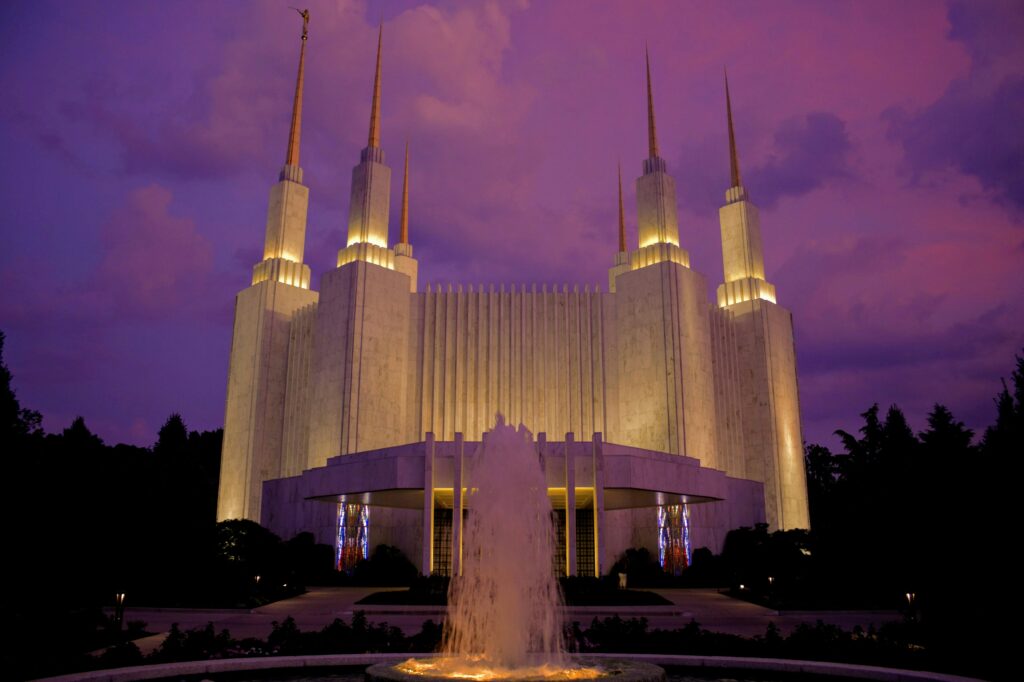Did you know that the temple recommend questions you answer during your interview haven’t always been the way that members of the church gain permission to worship in the temple? It makes sense that, along with other practices of the church, the temple recommend has transformed as the church grew and changed. During our 4 part series on the evolution of the temple recommend, we’ll dive into the often complicated vetting system that is the temple recommend interview.

The Transformation from Personal Acquaintance to Standardized Questionnaire
Over the years, The Church of Jesus Christ of Latter-Day Saints has seen a significant transformation in how it assesses the readiness of its members for temple admittance. Traditionally, the process relied heavily on personal interactions and the subjective judgment of church leaders. They would get to know members individually, forming a basis for recommendations about their participation in certain sacred activities. This method allowed for a personal touch and a deep sense of community, where leaders and congregants formed close bonds based on mutual understanding and respect.
However, as the church continued to grow, this intimate approach became less feasible. The need for a more standardized and equitable method became apparent, leading to the adoption of questionnaires as a means to determine a member’s preparedness for temple activities. This shift aimed to introduce a level of fairness and consistency previously unattainable through personal judgment alone. By implementing a uniform set of questions, the church could ensure that all members were evaluated by the same criteria, regardless of their relationship with church leaders.
Close-Knit Community to Expanding Membership
This transition marked a departure from the close-knit community dynamic that characterized the church’s earlier days. Moving to a more formalized process, the church sought to address the challenges that come with institutional growth, including the need to maintain order and fairness in a rapidly expanding membership. The introduction of formal interviews and written questionnaires represented an effort to balance the personal connection and pastoral care intrinsic to the church’s values with the practicalities of managing a larger congregation.
While this change has brought about a clearer set of rules for temple admittance, it has also introduced new concerns among members. Some feel anxious about meeting the standardized criteria, worrying that a one-size-fits-all approach may not fully capture their individual faith and commitment. This highlights a broader question: can a standardized system truly serve the diverse needs and experiences of a growing congregation?
One-Size-Fits-All
The move towards questionnaires and formal interviews raises important considerations about the balance between fairness and individuality. As the church navigates the complexities of growth and the desire to maintain a personal touch in spiritual guidance, it continues to explore ways to ensure that its practices are both equitable and sensitive to the unique spiritual journeys of its members. This ongoing evolution reflects the church’s commitment to fostering a sacred and inclusive community, even as it adapts to the changing landscape of religious practice.
Balancing Sacredness and Scrutiny
In today’s episode of our podcast, I found myself deeply engrossed in a conversation that navigates the intricate relationship between maintaining the sanctity of temple rituals and the meticulous nature of the temple recommend process. As I engaged in a thoughtful dialogue with Nathan, we ventured into the historical underpinnings of these sacred practices, examining the evolution of the criteria required for temple admittance. This topic struck a chord with me on a personal level, captivating my interest in how the transition from a straightforward endorsement of one’s character to a comprehensive interview process has significantly altered individuals’ perceptions of their spiritual worthiness and journey.
Traditions vs. Personal & Spiritual Growth?
Our conversation wasn’t confined to the annals of history; rather, it extended into a reflection on the contemporary implications of these practices. We contemplated how these evolved criteria and processes influence our current relationship with the divine and with our inner selves. This exploration shed light on the profound impact that these changes have on individuals, potentially reshaping their spiritual paths and self-perception in profound ways.
Throughout this episode, I seized the opportunity to express my reflections on the critical importance of prioritizing compassion and understanding over strict judgment in the spiritual lives of our listeners. This discussion is not merely an academic one; it is deeply relevant to how we navigate our faith and our connections to each other and to something greater than ourselves. It’s about recognizing the delicate balance between adhering to sacred traditions and being mindful of the personal and spiritual growth of each individual within the community.
A Call for Empathy
The insights shared today have underscored the dynamic nature of spiritual practices and the need for an empathetic approach to religious observance. This episode has been a meaningful exploration for me, offering a platform to articulate my thoughts on these matters and, hopefully, fostering a deeper sense of introspection and understanding among our listeners. As we reflect on these themes, it becomes evident that the journey towards spiritual fulfillment is as much about the compassion we extend to ourselves and others as it is about the rituals we observe.

Navigating Rigid Conformity
The evolution of religious or spiritual beliefs within an individual can often lead to significant questions regarding the equilibrium between preserving doctrinal integrity and encouraging personal spiritual development. This balance is delicate and complex, rooted in the inherent tension that exists between the expectations and norms established by religious institutions and the unique, personal journeys of faith that individuals embark upon.
Religious institutions often emphasize doctrinal integrity as a cornerstone of communal identity and coherence. This integrity is maintained through the adherence to a set of beliefs, practices, and ethical guidelines that are deemed non-negotiable. The purpose behind such rigidity is multifaceted, aiming to safeguard the tradition’s authenticity, foster a sense of unity among adherents, and provide a clear moral and spiritual framework within which individuals can operate. However, this emphasis on doctrinal purity can sometimes lead to a rigid, one-size-fits-all approach to spirituality that may not adequately accommodate the diverse experiences, interpretations, and spiritual needs of its members.
Confronting the Results of Growth
On the other hand, the personal faith journey of an individual is inherently dynamic and fluid, influenced by a myriad of factors including personal experiences, social interactions, intellectual inquiries, and emotional developments. This journey is characterized by a search for meaning, purpose, and connection that is deeply personal and subjective, often leading individuals to explore, question, and sometimes diverge from the established norms of their religious tradition. Such explorations can enrich an individual’s spiritual life, leading to profound personal growth and a deeper, more nuanced understanding of their faith. In fact, if you’d like to learn more about the appropriate and proven stages of faith outlined by James W. Fowler, take a look at this video or read Fowlers book Stages of Faith: The Psychology of Human Development and the Quest for Meaning, and don’t miss one of my most loved episodes on the podcast, Episode 33: Stages of Faith Development, Why We are Stuck, How to get Unstuck
The tension between these two poles — institutional demands for doctrinal adherence and the individual’s quest for personal spiritual fulfillment — raises critical questions about how religious communities can nurture a vibrant, living faith that honors the sanctity of individual spiritual exploration while maintaining a cohesive, shared identity. It challenges religious leaders and communities to find ways to be both guardians of tradition and facilitators of spiritual exploration, to create spaces where questions are welcomed, and diversity of thought and experience is seen as a source of strength rather than a threat to unity.
This balancing act requires ongoing dialogue, empathy, and a willingness to adapt, recognizing that the path to spiritual maturity is as varied as the individuals who walk it. It calls for a model of faith that is both rooted and expansive, offering firm foundations while allowing for growth and change. Ultimately, navigating this balance is not just about managing tensions but about embracing them as opportunities for deeper understanding, mutual enrichment, and a more inclusive and compassionate community.
Your Temple Recommend Experiences
I’d love to hear from you on this subject. I know that many of us have very tender experiences regarding the temple recommend interview and current requirements for admission. Leave a comment on this post, or head over to Instagram and DM me. Make sure to let me know. if it is okay to share your comments–anonymously, of course.

